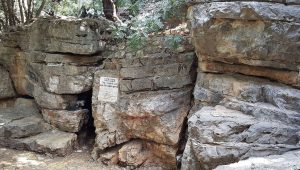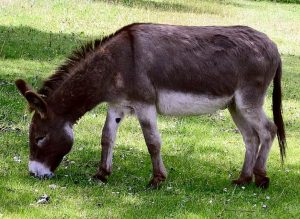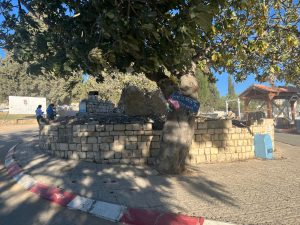“Rabbi Pinhas ben Yair would say: Torah study leads to care. Care leads to diligence. Diligence leads to cleanliness. Cleanliness leads to abstention. Abstention leads to purity. Purity leads to piety. Piety leads to humility. Humility leads to fear of sin. Fear of sin leads to holiness. Holiness leads to the Divine Spirit. The Divine Spirit leads to the resurrection of the dead. And piety is greater than all of them, as it is stated:’Then You did speak in a vision to Your pious ones’ (Psalms 89:20).” (Avoda Zara 20b)
Our world is full of self help books and video tutorials that are meant to help you achieve every goal, from weight loss to financial independence to happiness. Rabbi Pinhas ben Yair is giving us the roadmap to becoming a Hasid, a pious person. This list was so consequential that it appears, with variations, in numerous Rabbinic sources: at the end of Mishnah Sotah, in various midrashim and as the basis for works of mussar.
Rabbi Pinhas was uniquely suited to be a teacher of piety as he was known as a truly pious person, careful with both the mitzvot between man and God and those among people. He was a fifth generation Tanna, a contemporary of Rabbi Judah the Prince and the son-in-law of the famous teacher and mystic Rabbi Shimon bar Yohai. He and Rabbi Shimon had a close relationship as we can see from the following story that took place after Rabbi Shimon had emerged from his long years of hiding in a cave from the Romans:
“Rabbi Pinhas ben Yair, Rabbi Shimon’s son-in-law, heard and went out to greet him. He brought him into the bathhouse and began tending to his flesh. He saw that Rabbi Shimon had cracks in the skin on his body. He was crying, and the tears fell from his eyes and caused Rabbi Shimon pain. Rabbi Pinhas said to Rabbi Shimon: Woe is me, that I have seen you like this. Rabbi Shimon said to him: Happy are you that you have seen me like this, as had you not seen me like this, you would not have found in me this [prominence in Torah],” (Shabbat 33b)

The traditional site of Rabbi Shimon’s cave in Pekiin
Ovedc, CC BY-SA 4.0 <https://creativecommons.org/licenses/by-sa/4.0>, via Wikimedia Commons
Despite his piety, Pinhas did not leave behind many halachic statements. He was extremely careful about laws connected to the Land of Israel, especially maaser (tithing) and shmita (the Sabbatical year). Some of the miraculous stories about him focus on these two areas of interest. The stories told about Pinhas emphasize his piety, good deeds and miracles. Two story cycles, one in the Yerushalmi (Demai) and one in the Bavli (Hullin) share certain elements and tales. The most famous one, that appears in variations in both sources, is not about Pinhas himself but his donkey, who paralleled her master’s piety. After being stolen and refusing to eat from the thieves’ food, the donkey is returned to Pinhas but even there she refuses to eat:
“He said to them, give her something to eat. They put oats before her but she did not eat. They said to him, rabbi, she does not want to eat. . . He asked them, did you remove its demai (produce that may not have been tithed)? They said, did the rabbi not teach us: “He who buys for seeds or animals, flour for tanning, oil for lighting, or oil to rub vessels, is free from demai.” He said to them, what can we do with this poor creature since she is very strict with herself? They removed the demai and she ate.” (Yerushalmi Demai 1:3)

A less picky donkey
Adrian Pingstone, Public domain, via Wikimedia Commons
In the Bavli this story is connected to a trip that Pinhas takes to help redeem captives. On the way he encounters a river that he cannot cross. He commands the river to part for him, not once but three times:
“Rav Yosef said: How great is this man, greater than Moses and the six hundred thousand, as there, [the waters parted] one time, and here three times.” (Hullin 7a)
Other stories relate to his focus on making sure grain is tithed properly. When a town complains that mice are eating all the grain, the mice tell Pinhas that the people are being punished for not giving maaser. If they repent and give the proper tithe, the mice will leave. A similar discussion ensues when there is a water shortage (Yerushalmi Demai 1:3)
A different commandment connected to the land was shmitta, the Sabbatical year. In the difficult economic conditions of post Bar Kokhba Israel, Rabbi Judah the Prince tried to temporarily abolish shmitta. Pinhas hints to him not to do it and Rebbe follows his lead (Yerushalmi Demai 1:3).
Pinhas was not only careful about money owed to God through maaser, he was careful with other people’s money as well. When he is entrusted with some barley by travelers who do not return, he faithfully sows and reaps it for seven years, keeping the produce in his granary. When the travelers finally return, he presents them with the storehouse of barley (Devarim Rabba 3). He refused to eat at others’ tables, even his own father’s, out of fear that they either could not afford to have a guest or they were unwilling to host anyone and were doing it out of duress. Even when Rebbe convinced him to eat with him, Pinhas backed out at the last minute (Hullin 7b).
In the sixteenth century, Rabbi Isaac Luria identified Pinhas’ grave at the bottom of the ancient cemetery in Tzfat. It is not a typical grave as it has no headstone. The tradition is that this is because Pinhas wanted to be known for his deeds, not his grave, and he did not want people praying by his grave. A rather strange custom has grown up from this idea. People who visit the grave circle it seven times, praying as they go, so as not to be praying AT the grave itself.

Photo credit: Tami Meisels
The most lasting element of Rabbi Pinhas ben Yair’s Torah is its use in the mussar classic Mesilat Yesharim (The Path of the Just) by Rabbi Moshe Chaim Luzzatto. Luzzato (1707 – 1746) was a brilliant writer who wanted to encourage people to be true Jews who know how to serve God. As he puts it in his introduction:
“A consideration of the general state of affairs will reveal that the majority of men of quick intelligence and keen mentality devote most of their thought and speculation to the subtleties of wisdom and the profundities of analysis, each according to the inclination of his intelligence and his natural bent. . . There are few however who devote thought and study to perfection of Divine service – to love, fear, communion and all the other aspects of saintliness. It is not that they consider this knowledge unessential, if questioned each one would maintain that it is of paramount importance . . .Their failure to devote more attention to it stems rather from its being so manifest and so obvious to them that they see no need for spending much time on it. Consequently, this study and reading of works of this kind have been left to those of a not too sensitive, almost dull intelligence. These you will see immersed in the study of saintliness, not stirring from it. . . This state of affairs results in evil consequences both for those who possess wisdom and for those who do not, causing both sides to lack true saintliness and rendering it extremely rare. The wise lack it because of their limited consideration of it, and the unwise because of their limited grasp. The result is that saintliness is construed by most to consist in the recitation of many Psalms, very long confessions, difficult fasts and ablutions in ice and snow – all of which are incompatible with intellect and which reason cannot accept.” (Mesilat Yesharim)
Taking Pinhas’ list, Luzzatto carefully goes through each element, explaining in clear language and down to earth terms how each rung on this ladder of piety makes you a better person. He never sugarcoats things and he explains the pitfalls along the way, but like any good self-help book, his gradual approach gets you to the finish line. In this case the finish line is not looking good in a bathing suit but becoming a holy servant of God, a goal that would have been endorsed by Rabbi Pinhas ben Yair.

שלמה, CC BY-SA 4.0 <https://creativecommons.org/licenses/by-sa/4.0>, via Wikimedia Commons










